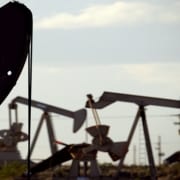Oil prices have fallen for the second consecutive week, but a major bullish catalyst may be looming in early February. So, Why oil prices could spike in February?
Oil prices will finish this week some $2 per barrel lower than a week ago as the January ICE Brent futures contract expires just below $77 per barrel. However, if Donald Trump’s February 1 deadline for Canada and Mexico leads to the US slapping punitive 25% sanctions, the second straight weekly decline could be cut short very quickly. If the threat does become a reality, the oil bulls will not stop until Brent is back above $80 per barrel.
Former IEA Employees Turn Against It. Just as the International Energy Agency came under severe criticism from Donald Trump due to its marked focus on climate change, a new report penned by the IEA’s former head of analysis identified 23 false assumptions in the organization’s peak-demand scenarios.
Investments into Clean Energy Hit New Record. Global investors invested $2.1 trillion into low-carbon energy for the first time on record in 2024. This is according to BloombergNEF. They achieved only 11% year-over-year growth. This is is slower than the 25% growth seen previously and only 37% of what is required to meet net zero emissions by 2050.
Cofee Is The New Cocoa of 2025.
Prices of arabica coffee continued to hit record highs this week as front-month ICE futures hit $3.74 per pound on Thursday. This is on the back of drought-hit tight supplies from Brazil and low coffee bean inventories from top roasters such as Nestle (SWX:NESN) or JDE Peet’s.
Click here to read the full article
Source: Oil Price
—
Do you have any questions or thoughts about the topic Why oil prices could spike in February? Feel free to contact us here or leave a comment below.










